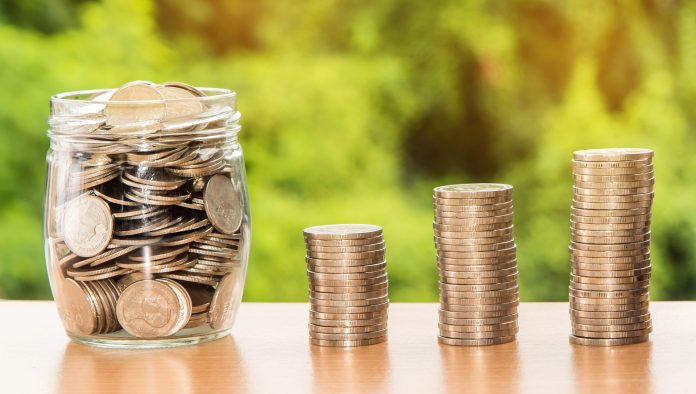There are plenty of opportunities to save for your future, and congratulations if you have some savings vehicles in place. An essential aspect of an effective savings plan is to ensure that it is balanced in saving and investing your money.
A balanced savings plan will help your money grow, give you the access you need to your money, and help prepare for your retirement. Read on to discover how you can develop a balanced savings plan.
Why Should You Save?
Before we look at how to achieve a balanced savings plan, it is worthwhile considering why you should save in the first place. Knowing this can give you the motivation you need to make saving a habit. Asking why you should save is a common question, especially during times of economic uncertainty when money can be tight.
Money plays such a significant role in your everyday life, and saving is an excellent way to prepare for your future and give you financial security. It is also a good way to put some funds aside to pay for significant events, major capital purchases, or unexpected events. Without savings, many people have to resort to borrowing to cover such occurrences, incurring debt which is never encouraged.
How Can You Save Effectively?
Putting money in a cardboard box and hiding it under your bed can be classified as saving, but there are many better approaches to saving money than this one. If you follow a few basic principles, saving will be easier, and it is more likely to develop into a lasting habit.
- Be Realistic About What You Can Save
Everyone has a different income, lifestyle, and spending habits. Therefore, everyone will have different amounts that they can comfortably save each month. Consequently, you should not try to match the amount someone else is saving. Instead, set an amount of money that you can comfortably put away each month and let that be the regular target for your savings.
If you try to match an unrealistic amount set by a friend or family member, the chances are that you will not be able to achieve your goal. This failure will lead you to be demotivated, and you will likely give up on saving altogether. Set yourself realistic savings goals, and stick to them.
-
Save Little and Often
Successful saving is all about getting into the habit of saving. It is better to save smaller amounts more often and be successful with those than trying to save a massive amount and failing to achieve that.
-
Become a Bargain Hunter
You will never be short of opportunities to spend money and people to spend it on. If you don’t want to cut back on your activities, try cutting back on what you pay for them. It has never been easier to find a bargain and compare prices to get yourself the best deal. There are comparison websites for pretty much everything, so start using these to find the cheapest suppliers.
In a similar vein, you can search the web and find vouchers for everything from meals out to concert tickets. Spend a little time becoming a bargain hunter, and you can put the cash you don’t spend into a savings plan.
-
Get Lots of Pots
Having different pots for your money will keep your finances in order and aid your efforts to save. For instance, you could start with having a pot for your everyday spending, one for short-term saving, a retirement pot, and a pot for your emergency funds. We’ll look at how best to establish these pots a bit later on.
-
Adopt a Pay-Day Savings Rule
One of the biggest hurdles to saving is that you might have spent all of your monthly income by the time you come to think about saving. To get around this, you should adopt the pay-day savings rule. Set up a routine whereby a set of money goes to your savings account as soon as your salary lands in your bank account. This way, you will not have the opportunity to spend it before it becomes savings.
How and Where To Save Your Money
As we mentioned above, one of the most effective ways of managing your finances and promoting your savings is to divide your money into different pots. Let’s take a look at these in a bit more detail:
Daily Expenses Pot
In this pot, you should keep the money you need to pay for your regular monthly spendings, such as food, commuting, bills, and other living expenses. You’ll need instant access to this money, so you’ll need to keep it somewhere that allows instant withdrawals, and a current account is an ideal location. Interest rates on current accounts are virtually non-existent at the moment, but it is still worthwhile looking around for the best deals.
You might want to subdivide your daily expense pot into several mini pots so that you do not overspend on one and leave another short. Online banking and digital payments mean that you can often get discounts for setting up automated payments or direct debits.
Short-Term Savings Pot
If you want to save for a holiday, a new device, new clothes, or a special occasion, you might consider putting some money away into a short-term savings pot. If you don’t need immediate access to your funds, a savings account can be a good vehicle for this money, as it will give you more interest than a current account. However, some savings accounts do come with restrictions on how you can access your money, so it’s worthwhile checking to find one that suits your circumstances.
Emergency Fund Pot
Your emergency fund pot is a bit like your short-term savings fund, with the difference that you don’t know when you will need access to it – hopefully not too soon! As this pot is set up to cover emergencies and unexpected spending’s such as renewing a boiler or car repairs, you are likely to need immediate access to the money, so consider this aspect when deciding where to put the money.
Ideally, your emergency pot should be sufficient to cover at least three months’ worth of living expenses. It is okay if you don’t have that amount initially, but that should be your goal to achieve as soon as you can.
Your Retirement Pot
Your pension is likely to be a significant part of your retirement pot. The legal requirement for employers to auto-enrol their employees into a workplace pension scheme means that it is easier than it’s ever been to establish a reasonable retirement pot.
Currently, if you are employed, over twenty-two, and earning at least £10,000 per year, you will be automatically enrolled into a workplace pension. You contribute 4% of your gross salary to your pension, but because these contributions qualify for tax relief, you end up getting a 5% contribution, which is effectively 1% of free money. Your employer is required to make a contribution matching at least 3% of your gross salary. They can choose to contribute more than 3%, as can you.
Workplace pension schemes and personal pensions have become more crucial as final-salary schemes have become more scarce. Final-salary pensions were seen as the gold standard of pensions, as they pay you a guaranteed amount for your whole retirement. However, they are costly for companies to run, so they have become less available.
Of course, part of your retirement pot will be the State Pension. The full State Pension is currently £179.60 per week, equating to around £9,339 a year. If you don’t think this amount will be enough to sustain the lifestyle you want when you retire, you should consider starting to save immediately if you have not done so already.
When looking at options for your pension, consider using a regulated financial adviser like Portafina or, view the info at Pension Wise.
Conclusion
If you have started to save, that is fantastic, and now is maybe the time to develop that into a balanced savings plan. Doing so will organise your finances, help you save more, and ensure you are best prepared for your retirement.























